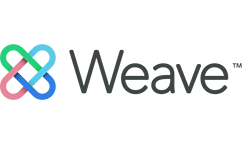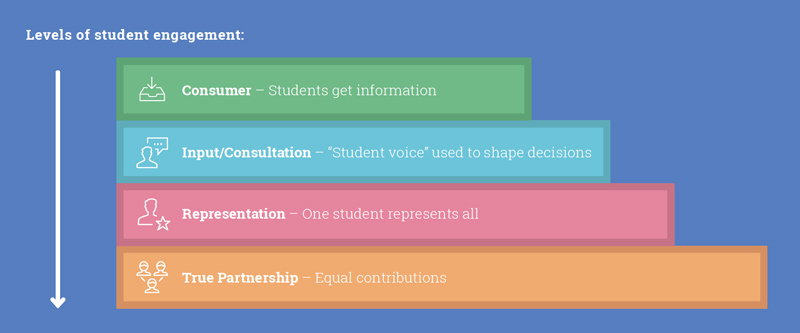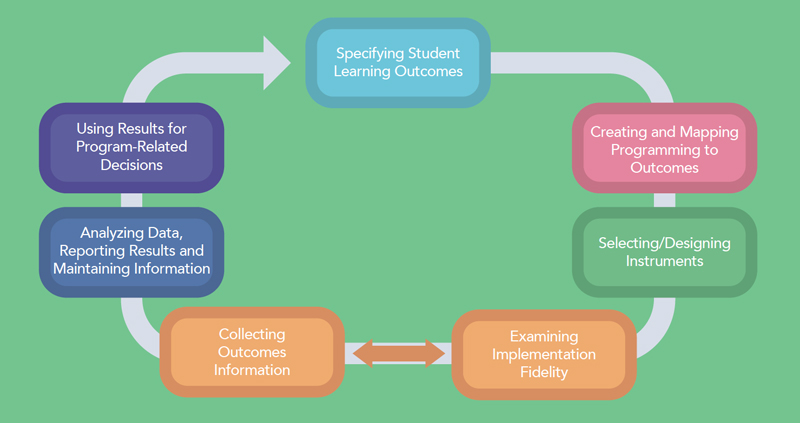Too often we invest in the assessment of student learning and development with too little return on investment in relation to improvement. While the improvement of learning and development has become a greater focus of the assessment process, the key stakeholders – students – do not have a true seat at the table. Without partnering with our students, it is more difficult and sometimes impossible to achieve the improvements we desire.
Content originally presented by Dr. Nick Curtis, Director of Assessment at Marquette University
Definition of Student Partnerships
There are actually a few definitions of student partnerships across different bodies of research, but the one we’ll use for this context comes from Cook-Sather, Bovill, and Felton (2014). They define student partnerships as:
“A collaborative, reciprocal process through which all participants have the opportunity to contribute equally, although not necessarily in the same ways, to curricular or pedagogical conceptualization, decision making, implementation, investigation, or analysis.”
When we apply this definition to our program assessment work, a few highlighted themes stick out. The top three are:
- Student partnership is a process and helps make outcomes assessment work better.
- Student work is reciprocal. Students actually get a lot of benefits from this work themselves.
- Partnerships require and inspire mutual respect and shared responsibility. Both sides of the partnership need to be mutually invested in the arrangement to be successful.
There are a few different levels of involvement and engagement when we speak about student and faculty partnerships. Here is a visual of the levels of student engagement.
Consumer
With the consumer, students are just passive consumers of information.
Input/consultation
Here the “student voice” is requested by faculty, interpreted and used to shape decisions. As an example, The University of Edinburgh brought students and faculty into the same room, served a pizza lunch, and discussed specific topics such as student engagement in the community, developing learning communities, and view of formative assessment. It was productive and impactful because of the dialogue of views that happened between students and faculty. Different initiatives came out of this back and forth discussion that would not have occurred without them.
Representation
One student represents all students.
True partnership
Students have collaborative, reciprocal and equal contributions. As an example, Elon University undertook a course redesign project after hearing reports that students hated the course and did not get much from it. Instead of just faculty solving the issue, they brought students in to help redesign the course together. This included the course description, syllabus, course materials, assignments, and tasks required during the class. What was helpful in this situation is that students are experts at being college students, and were allowed to bring that knowledge to the course redesign team.
An Overview of the Assessment Process
Here is a visual chart for a brief overview of the assessment process that institutions go through to lead to desired outcomes.
What is Missing from this Process? STUDENTS!
Students are a crucial part of truly understanding how effective your programs are, and should be an integral part in the assessment process. Below are some suggestions and examples of how you can include and partner with students in each step of the assessment process.
Specifying Student Learning Outcomes
Partner with students to increase awareness of program outcomes, help everyone share the same vocabulary and understand the importance of outcomes.
Creating and mapping Programming to Outcomes
Partner with students to foster ownership and co-creation of their own program learning.
Selecting Instruments
Partner with students to develop assessments with a shared understanding.
Examining Implementation Fidelity
Partner with students to increase awareness of intent and assess fidelity.
Collecting Outcomes Information
Partner with students to ensure accurate information and true assessment of education.
Analyzing Data, Reporting Results
Partner with students to understand why data is the way it is, and from the learning perspective.
Using Results for Decisions
Partner with students to develop interventions from the learner’s perspective.
***
For more detailed information on this topic, watch the A Path Forward: Partnering with Students in Learning Outcomes Assessment webinar recording.
Want to see how Weave can help you facilitate including students while simplifying your assessment processes?
Fill out the form below for a personalized demo. You’ll receive advice on your current accreditation system, as well as an overview of how Weave can simplify your workflows, improve collaboration and make your assessment and accreditation process a success. Contact Weave Education today!





